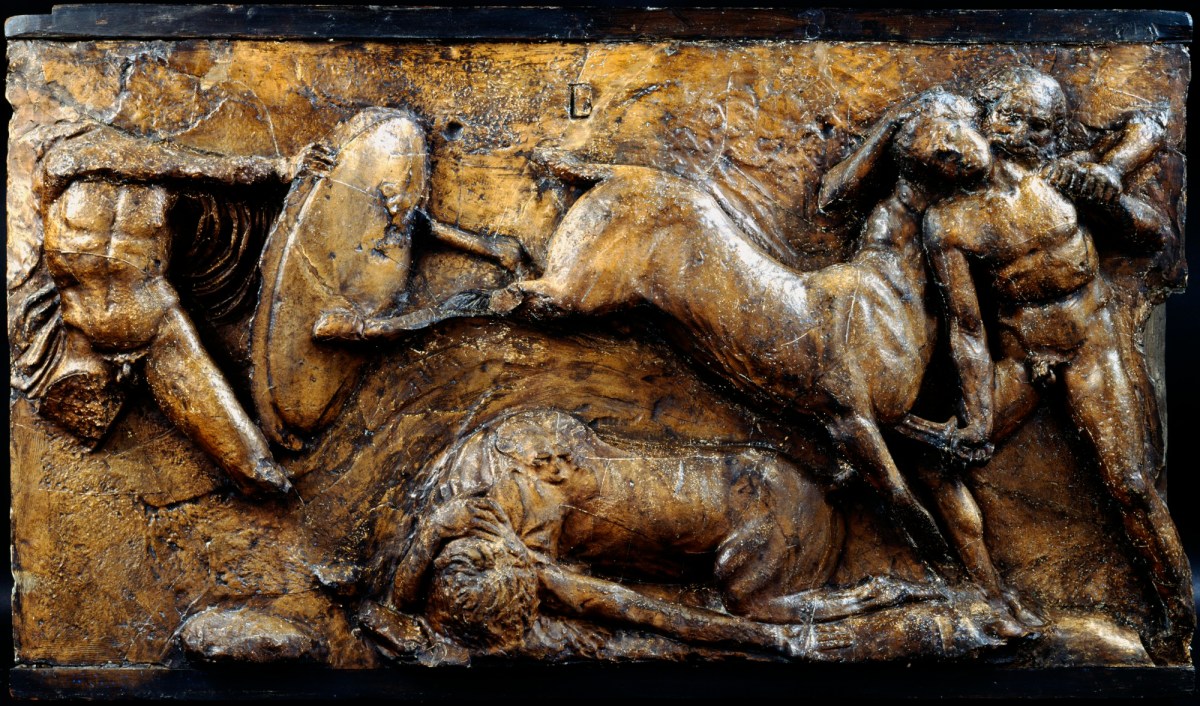
Unidentified sculptor, Lapith stabs a Centaur who bites him., c. 420-400 B.C..
Plaster cast. 720 mm x 1240 mm x 170 mm. © Photo: Royal Academy of Arts, London. Photographer: Paul Highnam.
This image is not available to download. To licence this image for commercial purposes, contact our Picture Library at picturelibrary@royalacademy.org.uk
Lapith stabs a Centaur who bites him., c. 420-400 B.C.
After Unidentified sculptor
RA Collection: Art
Plaster cast of a carved marble block from the North side of the continuous frieze of the Temple of Apollo Epikourios at Bassae, original now in the British Museum (museum number 1815,1020.2). The West and North frieze show the battle between Centaurs and Lapiths at the marriage-feast of Peirithoos.
This cast depicts a Lapith being bitten by a Centaur as he stabs him. The Centaur kicks out at a second Lapith on the left side of the composition. At the bottom lies a fallen centaur. This is one of four slabs showing the Greek in difficulty against the Centaurs.
The Temple of Apollo Epikourios ('Apollo the Helper') at Bassae (Phigalia) in southwest Arcadia, Greece was built between 420-400 BC by the architect Iktinos. A sculpted Ionic frieze of 23 slabs ran around the interior of the main room (cella) of the temple. It showed three battle scenes, the Trojan Amazonomachy, the Herakleian Amazonmachy, and the Centauromachy.
In the summer of 1811 Carl Haller and R.C. Cockerell noticed these panels by chance, supposedly while peering down a fox hole. Haller returned to excavate in 1812. In 1814, the British Museum purchased all of the slabs. Under the direction of Richard Westmacott RA in 1816, the Royal Academy commissioned casts of the complete frieze. Sixteen of the 23 casts are still today at the Academy.
Object details
720 mm x 1240 mm x 170 mm



